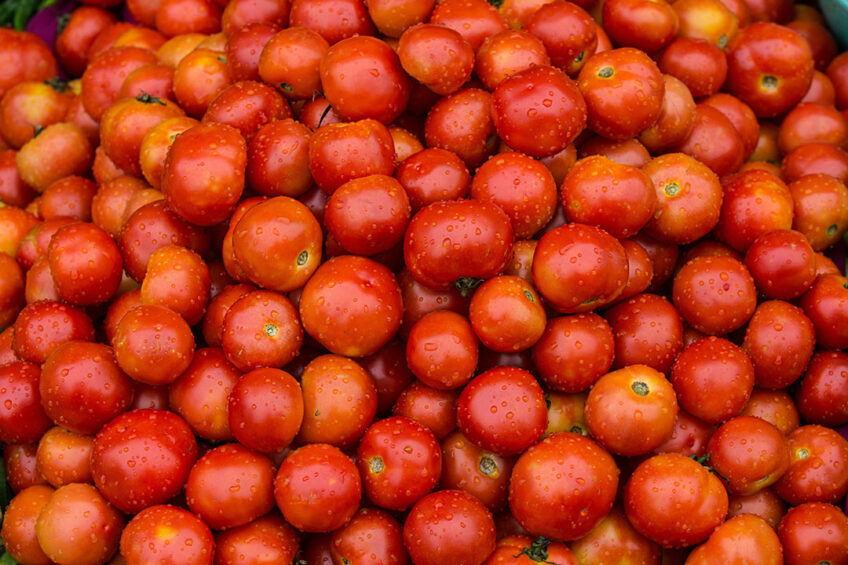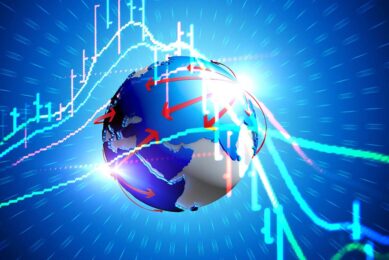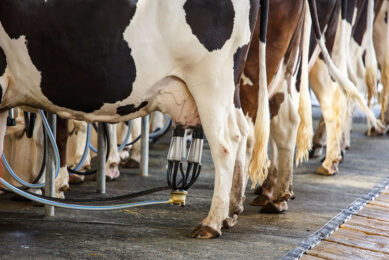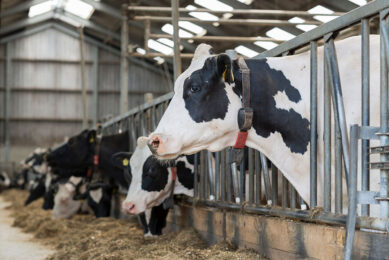4 underutilised feed sources for ruminants

Sometimes feed sources for ruminants are overlooked. Here we review 4 underutilised feed sources – tomato pomace, potato processing wastes, seaweeds, and silage effluent.
 Tomato pomace
Tomato pomace
Tomato pomace consists of the fruit peels and seeds, in addition to some residues stuck to the fruit during the manufacturing process, which represent together about 15% of the weight of processed fruits. This is, of course, a high percentage that reflects the large quantities resulting from this material annually at global level, especially when considering the rapid development in the tomato manufacturing process, which has increased in recent years to about three times the amount that was processed before.
Tomato pomace contains about 20-25% of high-quality protein with about 13% more lysine compared to other protein sources such as soybeans. It is also a suitable source of vitamins (A) and (B) and contains a high percentage of xanthophyll equivalent to that found in some other foods such as corn (about 200-240 mg / g). Antioxidants are naturally present in tomato pomace, which preserve the chemical properties and nutritional value of this material when stored for long periods. In economic terms, tomato pomace is less expensive than that of the other fruits, as it can be used in its untreated dry form without the need for heating, acidification, or other expensive treatments.
In a study on dairy cows, there were no significant differences in milk production between cows fed on tomato pomace (6.2 kg per day) and those fed on other traditional feed materials (6.3 kg per day). For best results, the percentage of tomato pomace should not exceed 25% of the forage part of the ration, or it may else reduce the digestibility value of the ration due to its high lignin content (19%).
 Potato processing wastes
Potato processing wastes
Depending on the processing plant, potato processing wastes may include potato pulp, peeling slivers, potato culls, potato chips, and fragments. They can be valuable as livestock feed due to their high energy and protein contents which remain chemically stable over long storage time.
In a study on dairy cattle, substituting potato waste for up to 20% of corn did not significantly affect DMI, milk yield, or milk protein. There were, however, a de¬creased milk fat percent and fat-corrected milk due to a shift in the molar proportions of rumen volatile fatty acids toward a decrease in acetate-to-propio¬nate ratio (Table 1). This problem can be corrected though by using a buffer material such as sodium or potassium bicarbonate, or by changing the forage-to-concentrate ratio in the ration.
 Seaweeds
Seaweeds
Seaweeds such as Ulva sp., Gigartina sp., and G. vermiculophylla are used at the Atlantic and Mediterranean coasts as feed sources for livestock during periods of feed scarcity. They effectively reduce rumen methane production without any detrimental effect on the other rumen fermentation parameters (Table 2). The reduced methane production, in this case, is often associated with improved animal production. It was indicated that a 20% reduction in methane emission could allow growing cattle to gain an additional 75 g/d of weight. In lactating cows, a 20% reduction in methane emissions represents the same amount of energy needed to synthesize 0.6 kg/d of milk. The effect of seaweeds may, however, vary depending on the substrate used. That is, the first two species (Ulva sp. and Gigartina sp.) are more effective in reducing methane production when used with grass hay at 25%, while the third (G. vermiculophylla) is effective only when used with corn silage at the same rate.
 Silage effluent
Silage effluent
Fresh, uncontaminated, undiluted effluent from well-preserved silage can be fed to cattle. Daily intake can be up to 45 liters (3.3 kg DM) per day, which have a nutritional value of about 2.5 kg of barley. In terms of animal performance, it was reported that milk yields and fat, protein, and lactose contents tended to increase for cows receiving effluent with concentrates. The increases in milk yield were small, however, relative to the amount of DM consumed, indicating reduced feed conversion efficiency when effluent was fed. Intakes of silage stored in the presence of effluent tended to be lower than those of silage from which effluent had been drained, but milk yield and milk composition were unaffected.
References are available from the author upon request.
Join 13,000+ subscribers
Subscribe to our newsletter to stay updated about all the need-to-know content in the dairy sector, two times a week.










